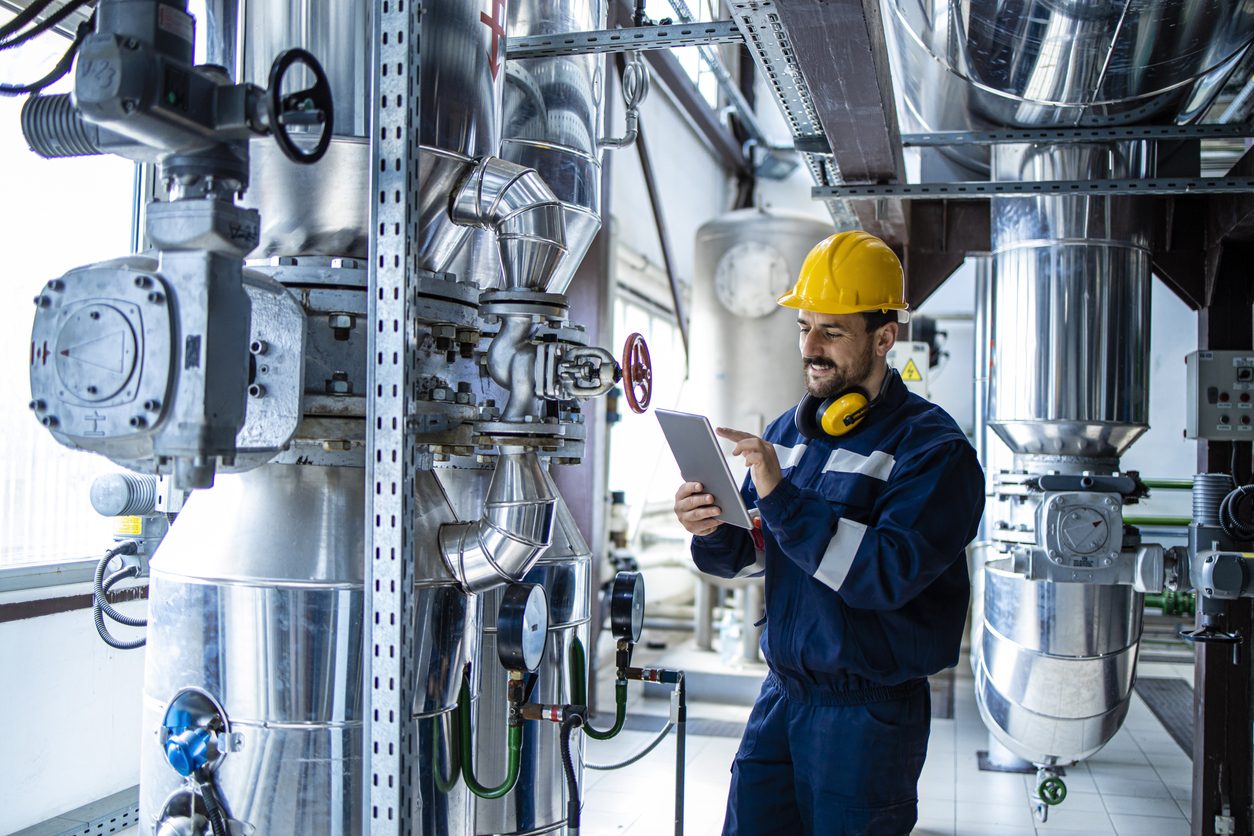One of its essential pillars is the digital transformation of district heating networks – a shift that goes far beyond infrastructure modernization. It represents a new approach to managing heat distribution networks, supported by national and EU funding programs.
Recently, the Polish government announced new financial support packages for infrastructure companies. These funds are primarily allocated for technical modernization, allowing heating providers to reduce maintenance costs and optimize energy production.
Why digitalize district heating networks?
Industry has evolved through successive revolutions – from the steam age, through electrification and computerization, to the Internet. The next phase is digitalization – shifting from analog to digital processes, based on real-time data and modern communication technologies.
In recent years, the term “digitalization” has become common across infrastructure sectors, including heating. Unfortunately, many definitions diverge from real-world practice. Below is ConnectPoint’s perspective — as a company actively implementing smart district heating networks — on the essential stages and benefits of this transformation.
What digitalization district heating networks are – and what they are not?
Digitalizing a district heating network means a comprehensive deployment of IT, IoT, and advanced analytics solutions that enable continuous, near real-time data collection, transmission, and processing from the network infrastructure. With this data, operators can:
- optimize temperature, pressure, and flow,
- make decisions based on actual operational data,
- predict failures and plan maintenance in advance,
- consistently lower heat production and distribution costs.
The core shift lies in moving from isolated components to a single intelligent ecosystem. Sensors and actuators, powered by Big Data and AI tools, allow automated and precise control of the network — leading to better efficiency, reliability, and lower energy bills for customers.
Proper digitalization goes far beyond office IT. Deploying an ERP system or updating individual heat substations without data integration won’t change how the network functions.
Also, digitalization is not the same as computerization. Computerization refers to digitalizing administrative processes (ERP, CRM, Office tools), whereas network digitalization focuses on continuous measurement, remote control, data analytics, prediction, and automation of physical infrastructure operations.
What’s often mistaken for digitalization, but isn’t.
In practice, many technical improvements — while necessary and valuable — don’t qualify as true digitalization. Common examples include:
- Replacing pipelines with newer or better-insulated ones, unless they’re equipped with smart sensors or monitoring systems.
- Installing heat meters in substations, without automated data collection and analysis.
- Building new heat sources without integrating them into digital control and analytics systems.
- Purchasing ERP or CRM software that helps manage the company, but doesn’t directly enhance digital control of the district heating network.
Digitalization is defined by the continuous, automated flow of operational data — used to support real-time decision-making and intelligent network management.
Stages of district heating digitalization – goals and KPIs.
Digitalization is not a one-time effort, but a multi-stage project usually broken down into key subprojects. Below are the most important stages, with their objectives and sample KPIs.

-
IoT infrastructure and real-time monitoring.
Building a sensor-based monitoring system enables collection of data on temperature, pressure, flow, and anomalies throughout the network. These sensors communicate with data collection and analytics platforms (via NB-IoT, LoRaWAN, etc.), giving operators real-time visibility into network operations.
Example KPIs:
- Number of installed IoT sensors vs. target.
- Real-time data quality (>95%).
- Number of anomalies detected per month.
-
SCADA/DMS systems and remote control.
SCADA and DMS systems allow remote control of the network — managing flow, temperature, and valves. Integrated with actuators and pump stations, they enable quick responses to changes and help reduce losses.
Example KPIs:
- Average failure response time (<5 min).
- % of network length under remote control.
- Data continuity to IT systems.
-
Integration with GIS, EAM, and CRM systems.
Combining spatial data (GIS), asset data (EAM/CMMS), and customer data (CRM/billing) allows full oversight of the network and services — from asset management to handling customer requests.
Example KPIs:
- Number of systems integrated on a single platform.
- Time to generate a full operational report (<15 min).
-
Digital Twin of the district heating network.
A virtual model of the network that mirrors infrastructure and operational data allows for scenario testing, investment planning, and risk forecasting — without affecting real-world operations.
Example KPIs:
- % improvement in data quality.
- Number of decisions made using the Digital Twin.
-
Predictive Maintenance.
By analyzing data using AI/ML, the system can predict equipment failures and schedule preventive maintenance. This enables a shift from reactive to proactive operations, reducing risks and costs.
Example KPIs:
- Number of failures detected in advance.
- Emergency downtime cost reduction (%).
- Decrease in routine maintenance interventions.
-
Field operations and dispatcher support.
Mobile dashboards, GIS-based apps, and task scheduling tools help dispatchers and crews respond faster and more effectively. Field staff document activities directly from incident sites.
Example KPIs:
- Average crew response time.
- Number of tasks assigned via mobile system.
-
Smart Customer Service and connection processes.
Online forms, customer portals, comfort monitoring, and mobile integration let customers manage services independently and contact operators quickly and easily.
Example KPIs:
- % of customers using digital services (eBOK/app).
- Number of fully digital connection requests.
- Customer satisfaction (NPS).
-
Energy storage, hybrid substations, and renewables.
Integrating energy storage, heat pumps, and hybrid nodes improves peak load management and increases renewable energy use.
Example KPIs:
- Storage capacity (MWh) / % of demand.
- Number of hybrid operation days per season.
- CO₂ reduction.
How can district heating networks be successfully digitalized? An example is the Smart Heating Network at Veolia Poland in Warsaw.
Veolia is implementing the ISC (Smart Heating Network) 2.0 project in Warsaw, with ConnectPoint as its technology partner. The project’s goal is to equip and digitally control 6,000 heat substations. The system enables:
- real-time monitoring of temperature and pressure,
- automated heat supply adjustments,
- rapid fault detection and response.
The project aims to reduce heat losses by over 64,000 GJ annually and cut CO₂ emissions by more than 4,500 tons. It is co-financed by the Modernization Fund and the National Fund for Environmental Protection (NFOŚiGW), with completion planned by 2027.
Want to learn how we helped Veolia digitize its district heating network?
Check out our case study “Monitoring of the Warsaw District Heating Network” and reach out to our experts!
Building team capabilities while digitalizing district heating networks.
Any infrastructure modernization requires upskilling. Digitalizing an entire network is a strategic initiative and cannot succeed without expanding internal competencies.
Equipping teams to effectively use new tools is often the key success factor – leading to reduced costs and improved reliability. In organizations rich in IoT and SCADA data, an advanced analytics team can:
- Detect unusual network behavior and predict failures
- Recommend preventive actions using Big Data analysis
- Suggest the most efficient infrastructure expansion strategies
Smaller companies can rely on external services or cloud-based AI modules – the key is using data for smart network management.
A digital heating network means real savings – proven together with Veolia Poland.
The ISC 2.0 project experience in Warsaw shows that full-scale digitization — from IoT sensors and SCADA to Digital Twin and predictive maintenance — can reduce heat losses by tens of thousands of GJ and cut CO₂ emissions by several thousand tons per year within just the first few years. The earlier a utility company adopts a unified data architecture and automation, the sooner it will see measurable benefits: lower fuel costs, fewer heat supply interruptions, and improved customer comfort.
ConnectPoint supports heating network operators at every step of this journey — from concept and financing to deployment and long-term support. If your company is ready to follow in Veolia’s footsteps and shift from technical upgrades to a truly intelligent heating network, reach out to our team of experts.

